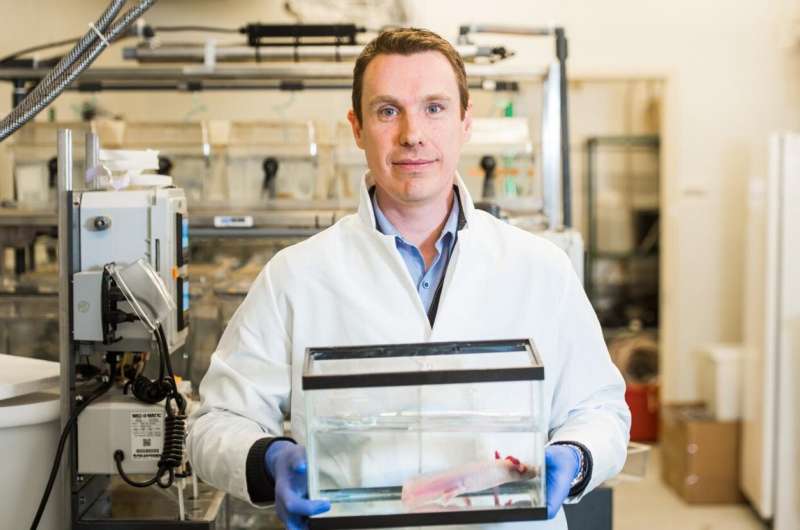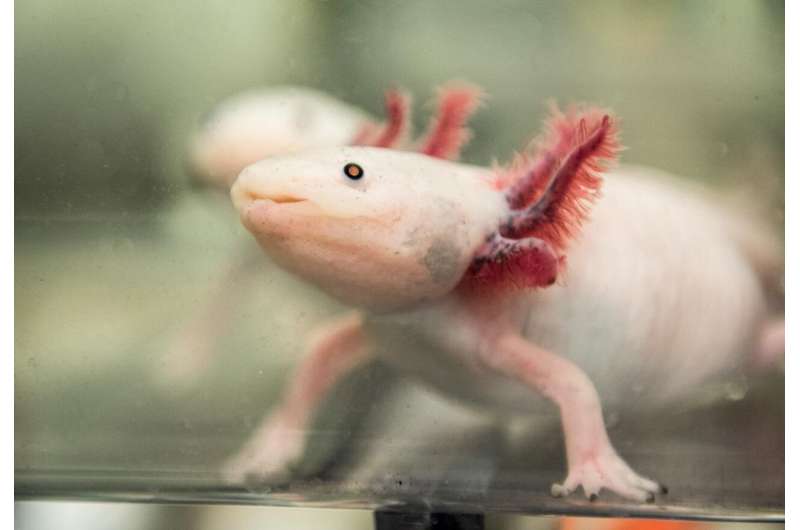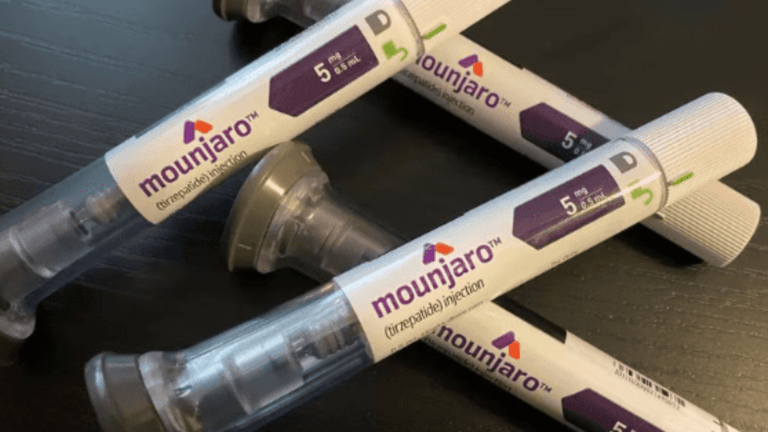
Videos
Discussed During Podcast at 7pm CST every day
Please Share Your Thoughts or Make Suggestions for More Videos
Please remember to take in all the good and discard the rest. Amen.
MDI Biological Laboratories below focuses on changing the genetic DNA of humans, plants, and animals. This genetic engineering sometimes can be perceived as innovative. Whereas, some people understand that it eliminates natural selection and the genome that God created.
For this reason, why would anyone want to participate in experiments that have irreversible unknown risks?
“15 The second beast was given power to give breath to the image of the first beast, so that the image could speak and cause all who refused to worship the image to be killed. 16 It also forced all people, great and small, rich and poor, free and slave, to receive a mark on their right hands or on their foreheads, 17 so that they could not buy or sell unless they had the mark, which is the name of the beast or the number of its name.
18 This calls for wisdom. Let the person who has insight calculate the number of the beast, for it is the number of a man.[e] That number is 666.”
What about the mark of the beast, in what ways do you believe the mark of the beast will infiltrate the world when everyone will be required to get the mark?
12 There is a way which seemeth right unto a man, but the end thereof are the ways of death.
In what ways do you believe that people will be deceived into taking and accepting the mark? Will there be incentives to getting it?
Make sure no one deceives you 1 John 3:7!!!
“My people are destroyed from lack of knowledge. “Because you have rejected knowledge, I also reject you as my priests; because you have ignored the law of your God, I also will ignore your children”
When technology is being used humans that go rogue can abuse it. Remember that!!!

Scientist identifies signaling underlying organ and limb regeneration
by Mount Desert Island Biological Laboratory

Many salamanders can readily regenerate a lost limb, but adult mammals, including humans, cannot. Why this is the case is a scientific mystery that has fascinated observers of the natural world for thousands of years.
Now, a team of scientists led by James Godwin, Ph.D., of the MDI Biological Laboratory in Bar Harbor, Maine, has come a step closer to unraveling that mystery with the discovery of differences in molecular signaling that promote regeneration in the axolotl, a highly regenerative salamander, while blocking it in the adult mouse, which is a mammal with limited regenerative ability.
"Scientists at the MDI Biological Laboratory have been relying on comparative biology to gain insights into human health since its founding in 1898," said Hermann Haller, M.D., the institution's president. "The discoveries enabled by James Godwin's comparative studies in the axolotl and mouse are proof that the idea of learning from nature is as valid today as it was more than one hundred and twenty years ago."
Instead of regenerating lost or injured body parts, mammals typically form a scar at the site of an injury. Because the scar creates a physical barrier to regeneration, research in regenerative medicine at the MDI Biological Laboratory has focused on understanding why the axolotl doesn't form a scar—or, why it doesn't respond to injury in the same way that the mouse and other mammals do.
"Our research shows that humans have untapped potential for regeneration," Godwin said. "If we can solve the problem of scar formation, we may be able to unlock our latent regenerative potential. Axolotls don't scar, which is what allows regeneration to take place. But once a scar has formed, it's game over in terms of regeneration. If we could prevent scarring in humans, we could enhance quality of life for so many people."
The axolotl as a model for regeneration
The axolotl, a Mexican salamander that is now all but extinct in the wild, is a favorite model in regenerative medicine research because of its one-of-a-kind status as nature's champion of regeneration. While most salamanders have some regenerative capacity, the axolotl can regenerate almost any body part, including brain, heart, jaws, limbs, lungs, ovaries, spinal cord, skin, tail and more.
Since mammalian embryos and juveniles have the ability to regenerate—for instance, human infants can regenerate heart tissue and children can regenerate fingertips—it's likely that adult mammals retain the genetic code for regeneration, raising the prospect that pharmaceutical therapies could be developed to encourage humans to regenerate tissues and organs lost to disease or injury instead of forming a scar.

In his recent research, Godwin compared immune cells called macrophages in the axolotl to those in the mouse with the goal of identifying the quality in axolotl macrophages that promotes regeneration. The research builds on earlier studies in which Godwin found that macrophages are critical to regeneration: When they are depleted, the axolotl forms a scar instead of regenerating, just like mammals.
The recent research found that although macrophage signaling in the axolotl and in the mouse were similar when the organisms were exposed to pathogens such as bacteria, funguses and viruses, when it came to exposure to injury it was a different story: The macrophage signaling in the axolotl promoted the growth of new tissue while that in the mouse promoted scarring.
The paper on the research, entitled "Distinct TLR Signaling in the Salamander Response to Tissue Damage" was recently published in the journal Developmental Dynamics. In addition to Godwin, authors include Nadia Rosenthal, Ph.D., of The Jackson Laboratory; Ryan Dubuque and Katya E. Chan of the Australian Regenerative Medicine Institute (ARMI); and Sergej Nowoshilow, Ph.D., of the Research Institute of Molecular Pathology in Vienna, Austria.
Godwin, who holds a joint appointment with The Jackson Laboratory, was formerly associated with ARMI and Rosenthal is ARMI's founding director. The MDI Biological Laboratory and ARMI have a partnership agreement to promote research and education on regeneration and the development of new therapies to improve human health.
Specifically, the paper reported that the signaling response of a class of proteins called toll-like receptors (TLRs), which allow macrophages to recognize a threat such an infection or a tissue injury and induce a pro-inflammatory response, were "unexpectedly divergent" in response to injury in the axolotl and the mouse. The finding offers an intriguing window into the mechanisms governing regeneration in the axolotl.
Being able to 'pull the levers of regeneration'
The discovery of an alternative signaling pathway that is compatible with regeneration could ultimately lead to regenerative medicine therapies for humans. Though regrowing a human limb may not be realistic in the short term, significant opportunities exist for therapies that improve clinical outcomes in diseases in which scarring plays a major role in the pathology, including heart, kidney, liver and lung disease.
"We are getting closer to understanding how axolotl macrophages are primed for regeneration, which will bring us closer to being able to pull the levers of regeneration in humans," Godwin said. "For instance, I envision being able to use a topical hydrogel at the site of a wound that is laced with a modulator that changes the behavior of human macrophages to be more like those of the axolotl."
Godwin, who is an immunologist, chose to examine the function of the immune system in regeneration because of its role in preparing the wound for repairs as the equivalent of a first responder at the site of an injury. His recent research opens the door to further mapping of critical nodes in TLR signaling pathways that regulate the unique immune environment enabling axolotl regeneration and scar-free repair.
More information: Ryan J. Debuque et al, Distinct toll‐like receptor signaling in the salamander response to tissue damage, Developmental Dynamics (2021). DOI: 10.1002/dvdy.340
Provided by Mount Desert Island Biological Laboratory
Explore further

Human ancestry has been shaped by mixing and matching alleles, show two recent studies
1 hour ago

Examining puppeteer fungus' targeted takeover of zombie flies
1 hour ago

NASA picks Bezos' Blue Origin to build lunar landers for moonwalkers
2 hours ago

Study finds pollinators are attracted to humidity, not just scent
3 hours ago

Exploring a novel way to convert heat to electricity
3 hours ago

Demystifying vortex rings in nuclear fusion and supernovae
3 hours ago

Evidence of bird sacrifices to the goddess Isis in ancient Roman Empire
4 hours ago

Plastic pervasive in food supply, says new study
4 hours ago

New study reveals possible future health impacts related to climate mitigation
4 hours ago

Researchers build mosquito testing arena to discover how they find us over long distances
4 hours ago
-
Related Stories
-
Recommended for you
Let us know if there is a problem with our content
E-mail the story
Scientist identifies signaling underlying organ and limb regeneration
Your Privacy
This site uses cookies to assist with navigation, analyse your use of our services, collect data for ads personalisation and provide content from third parties. By using our site, you acknowledge that you have read and understand our Privacy Policy and Terms of Use.













